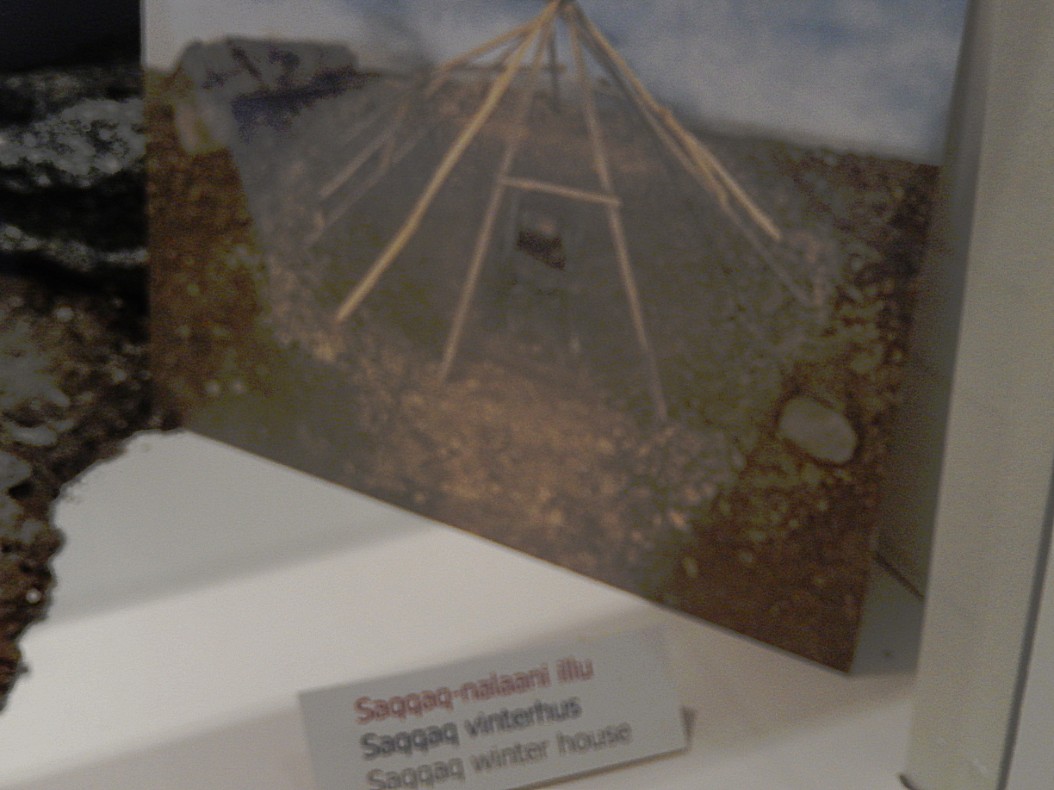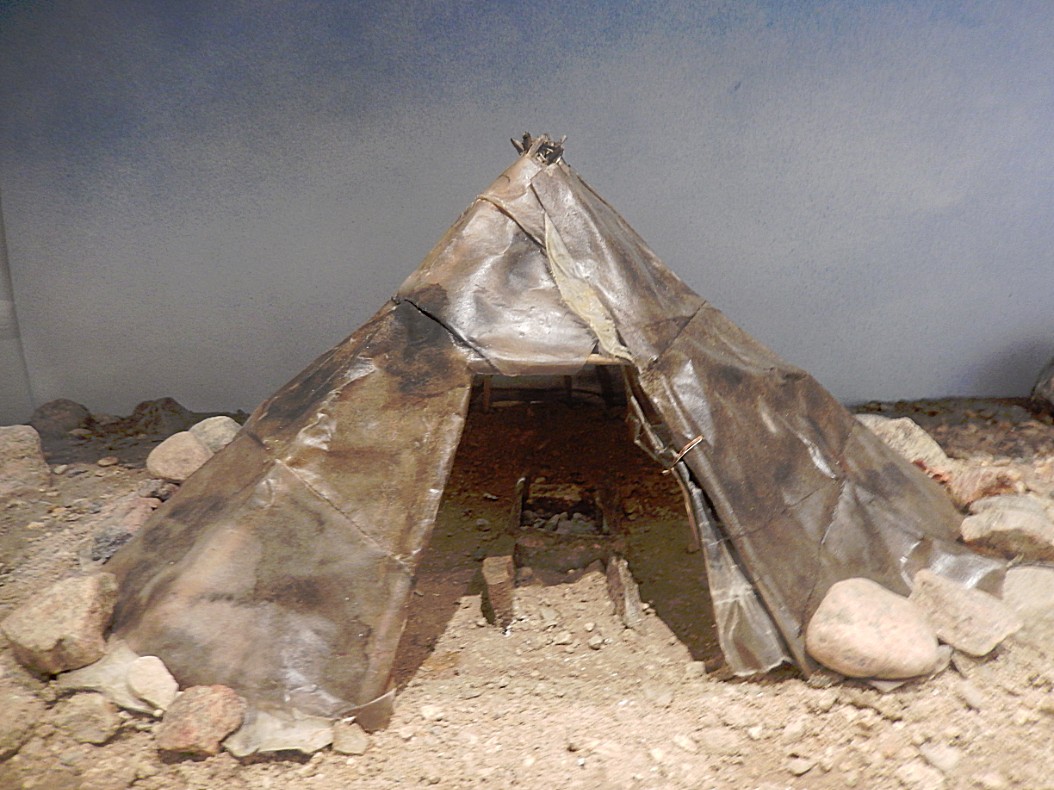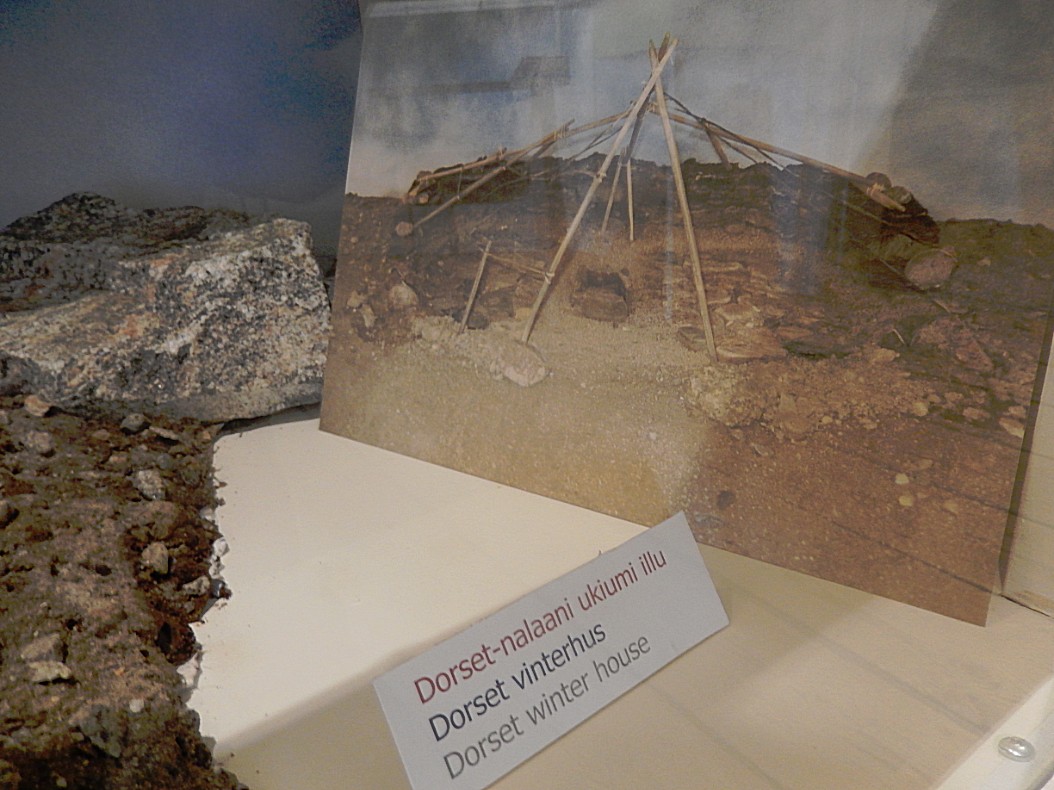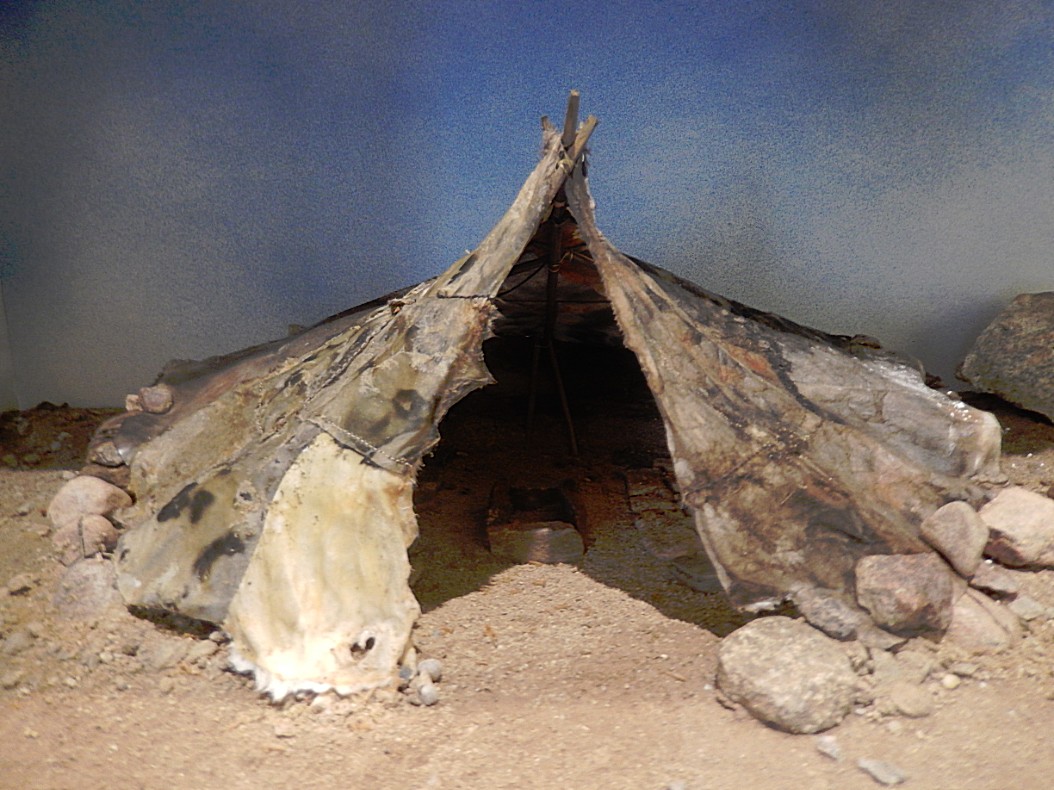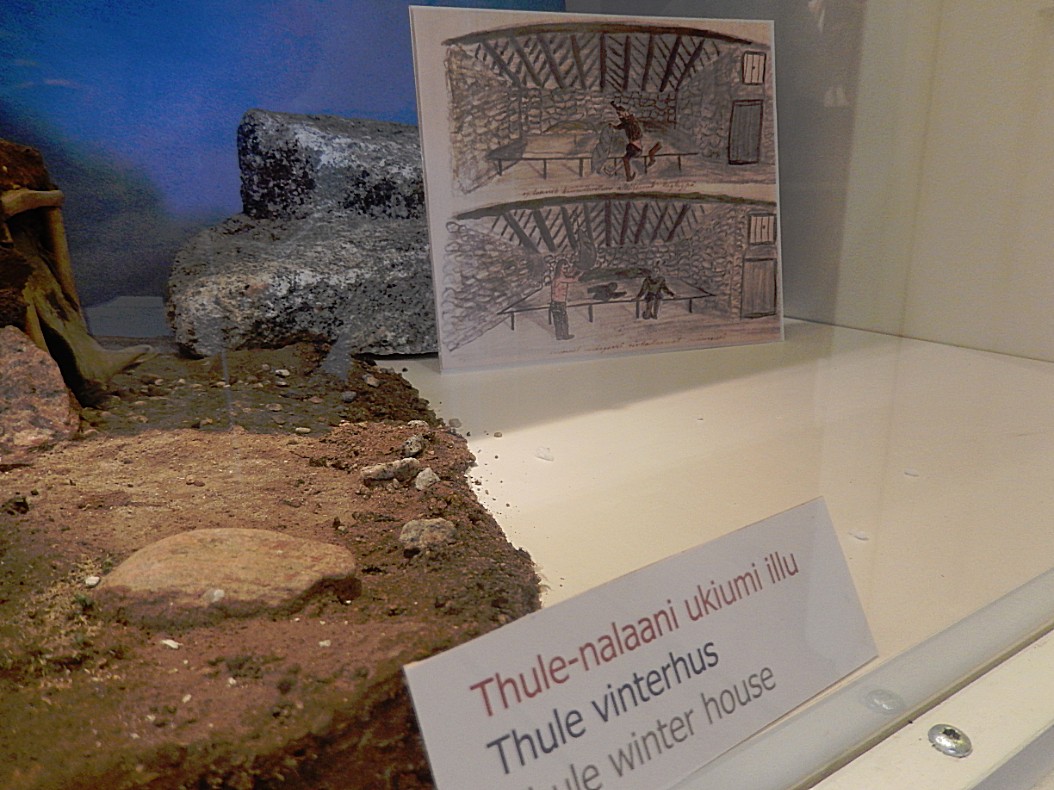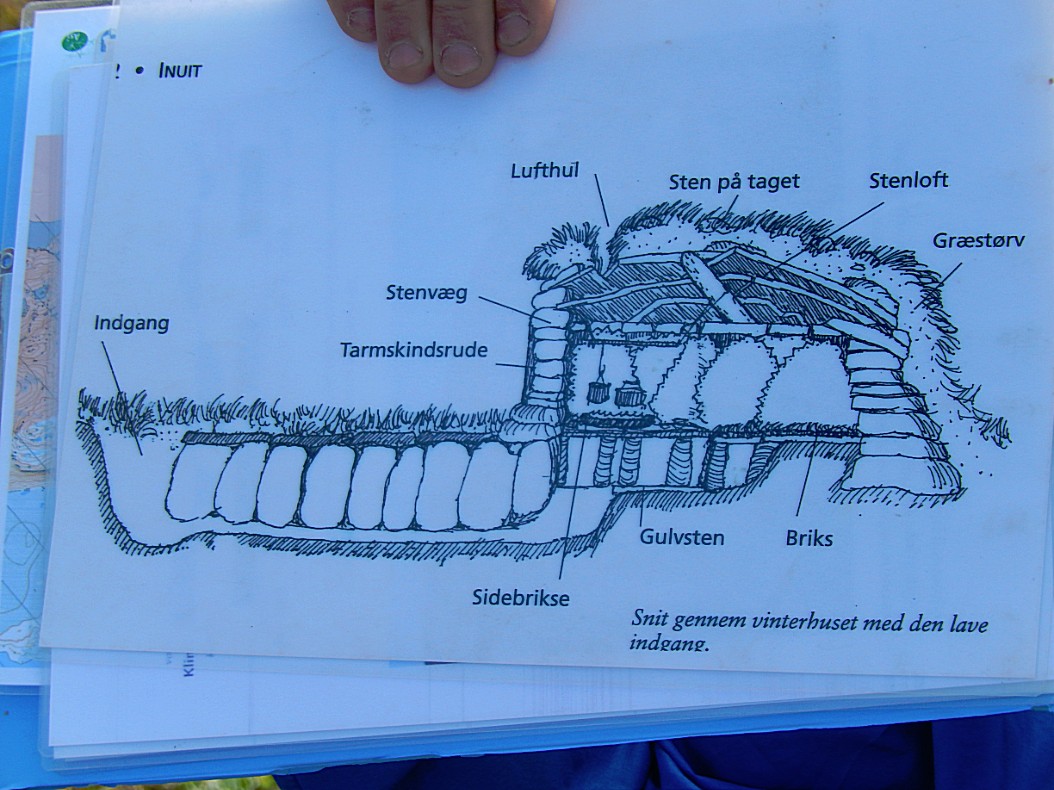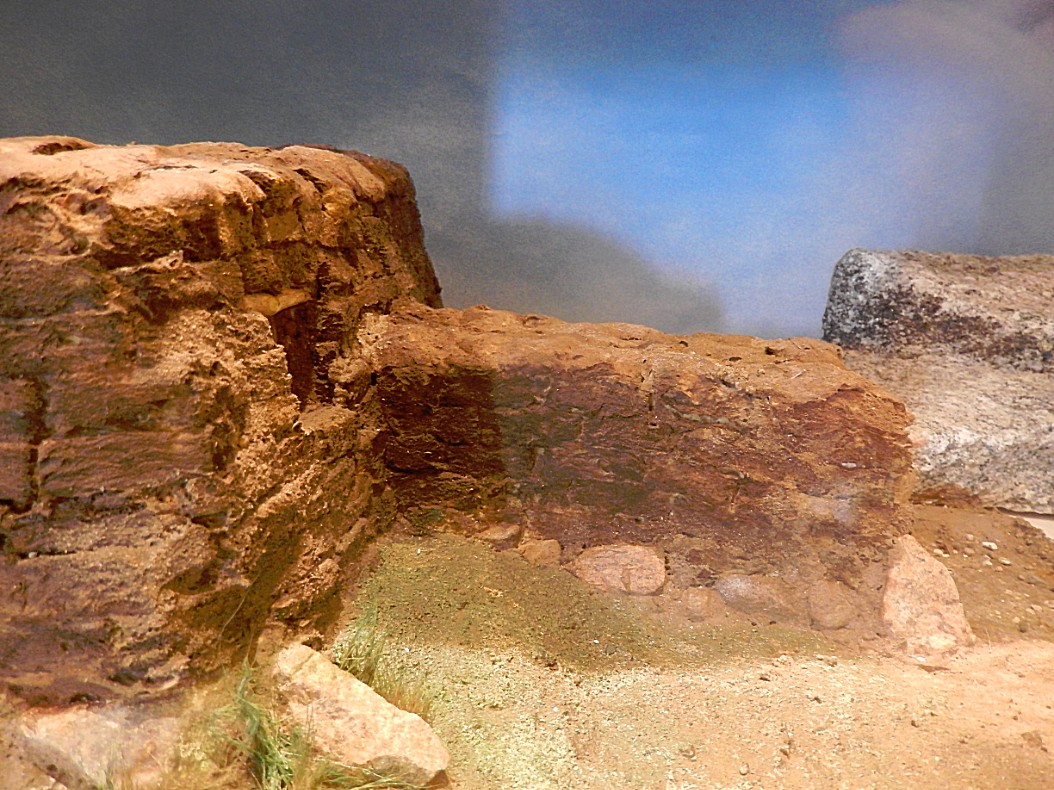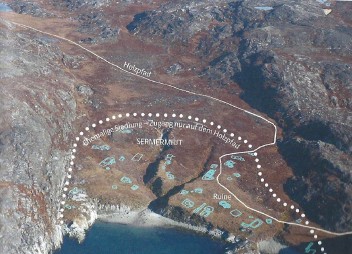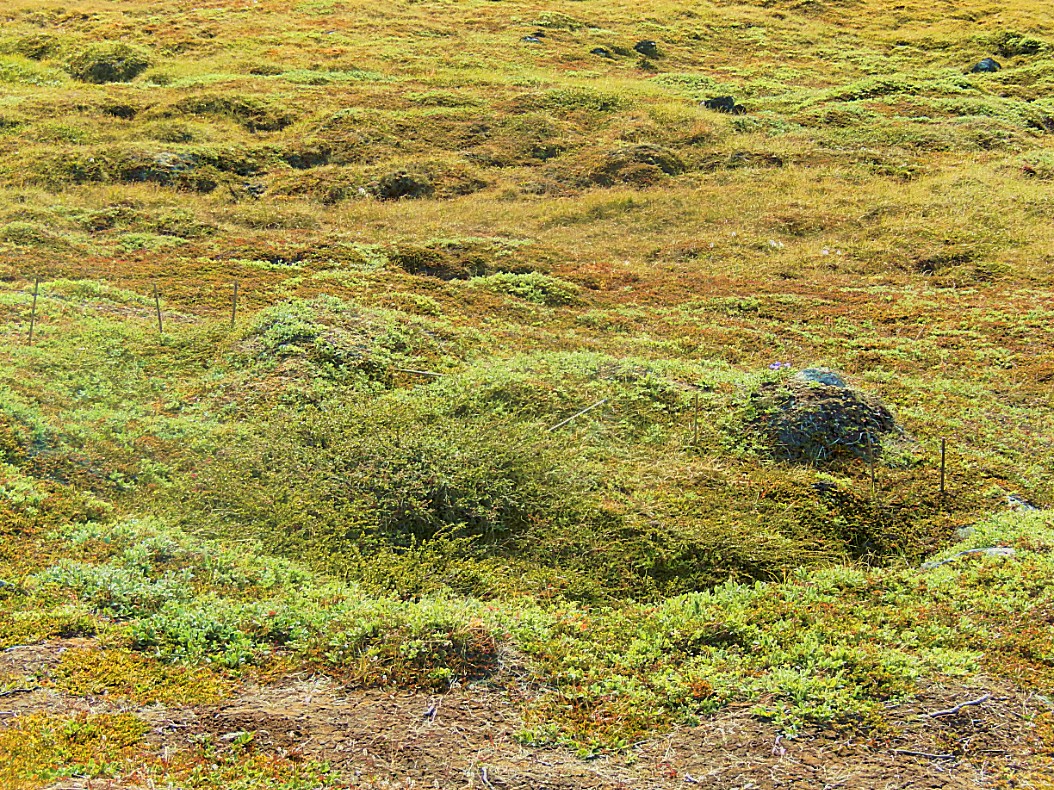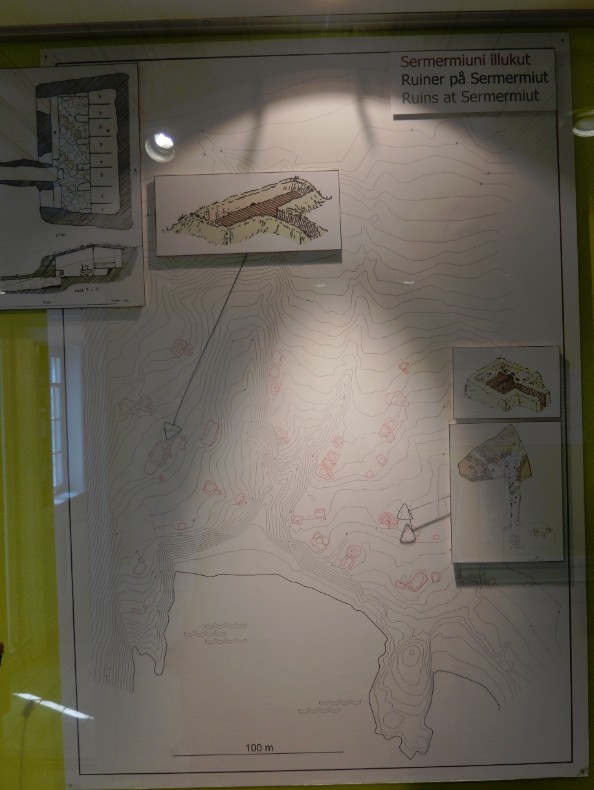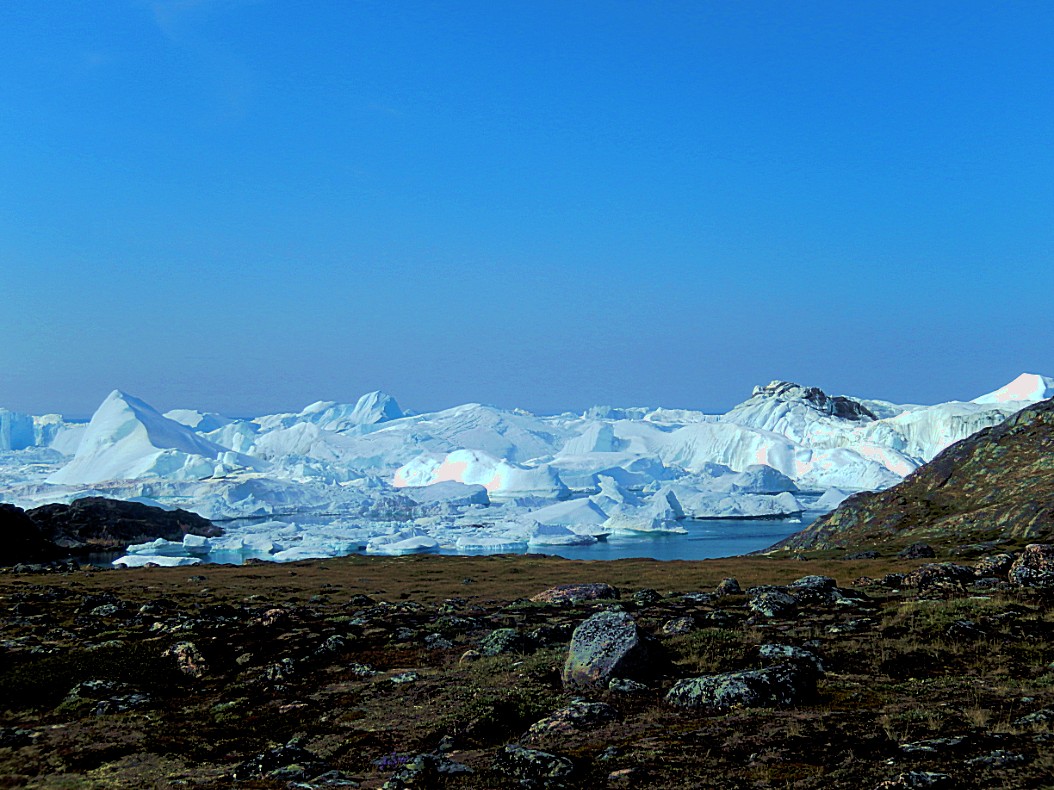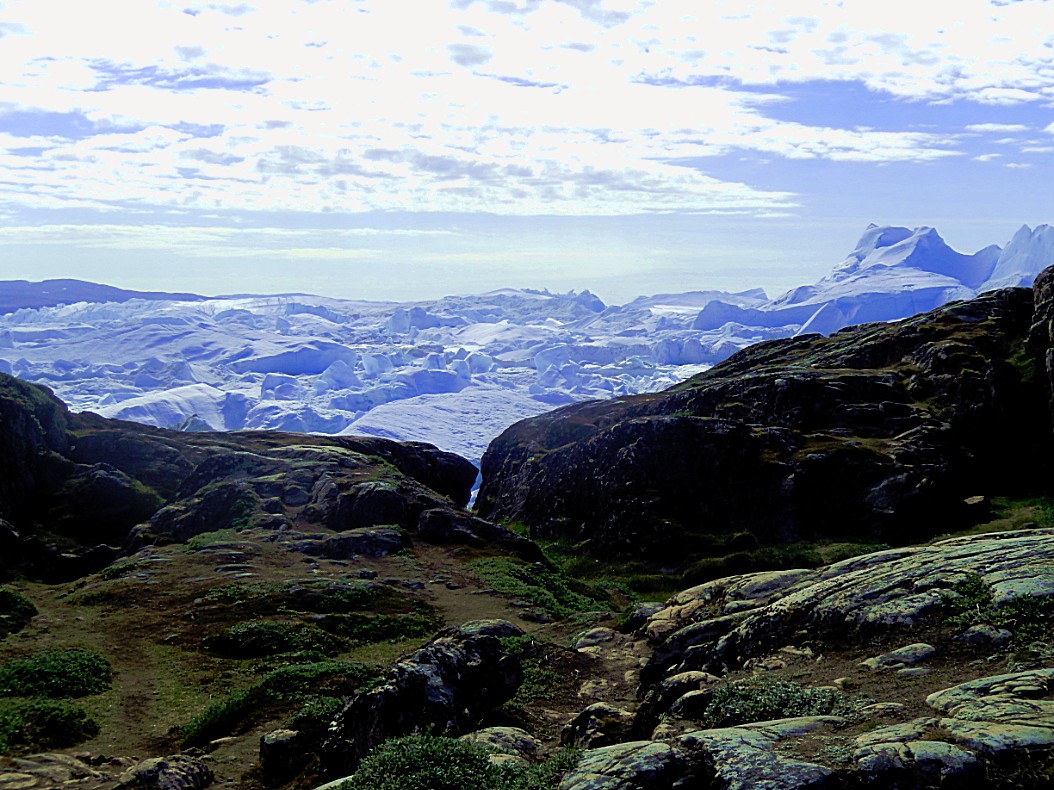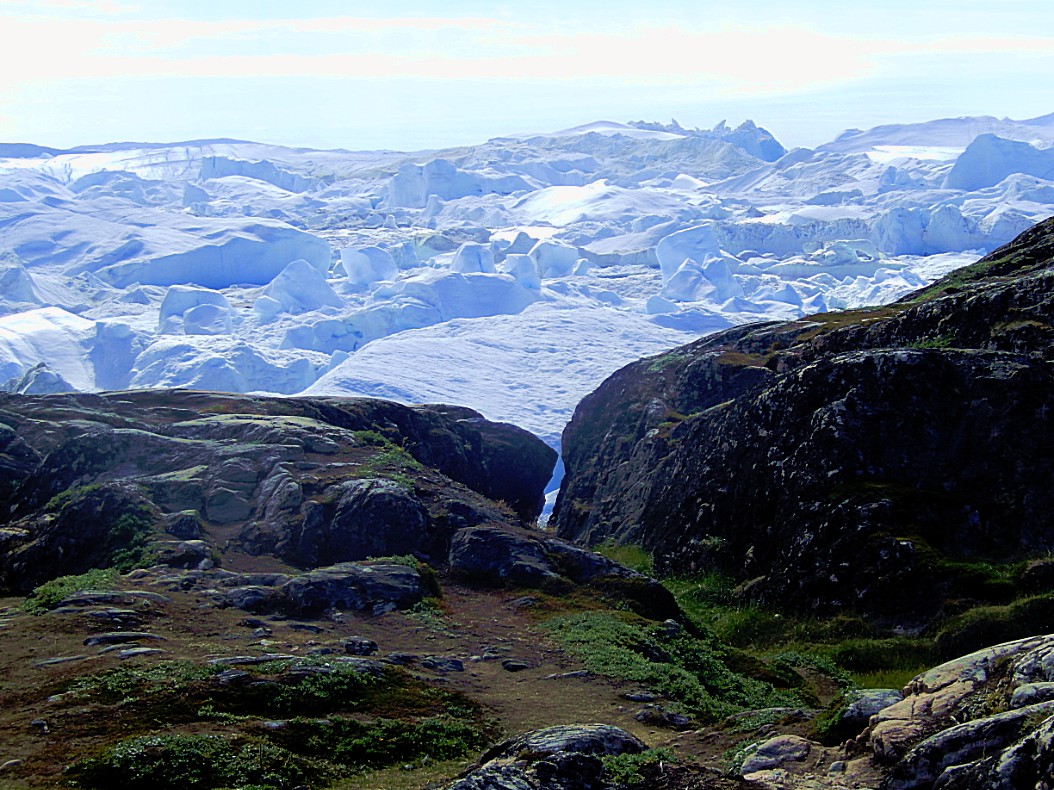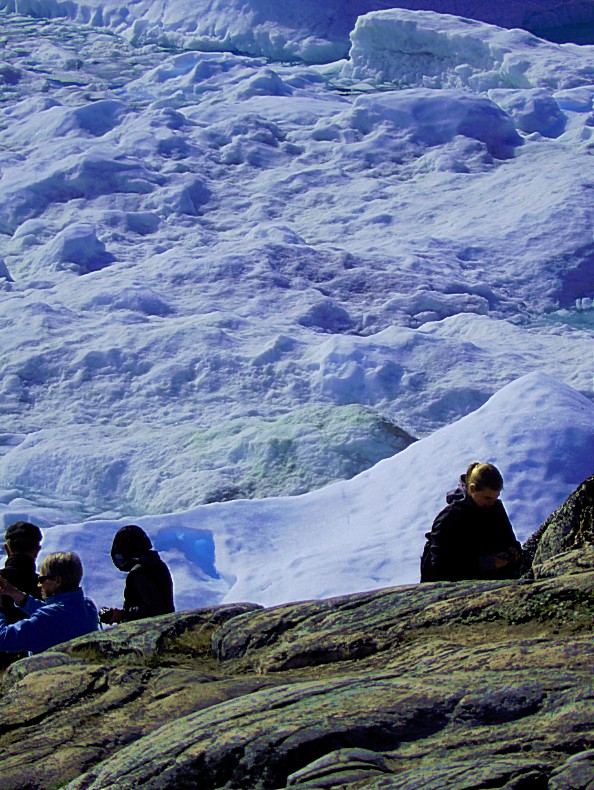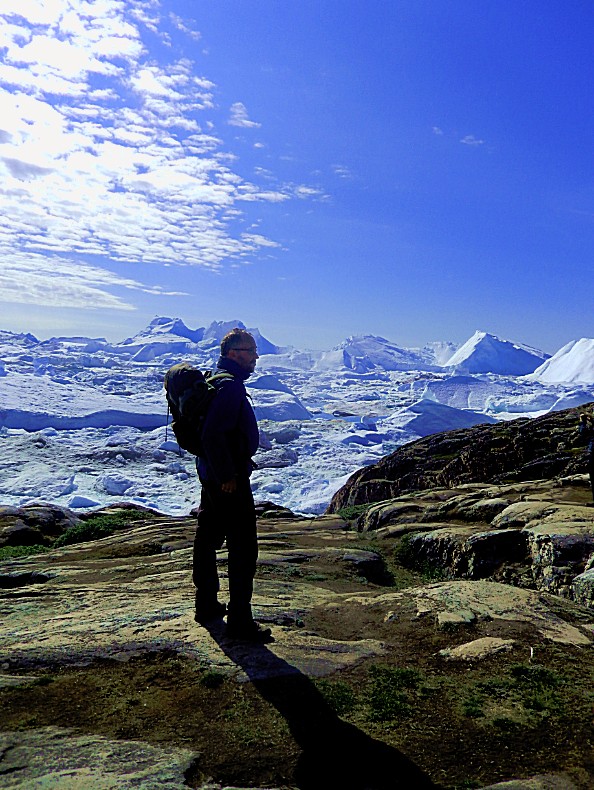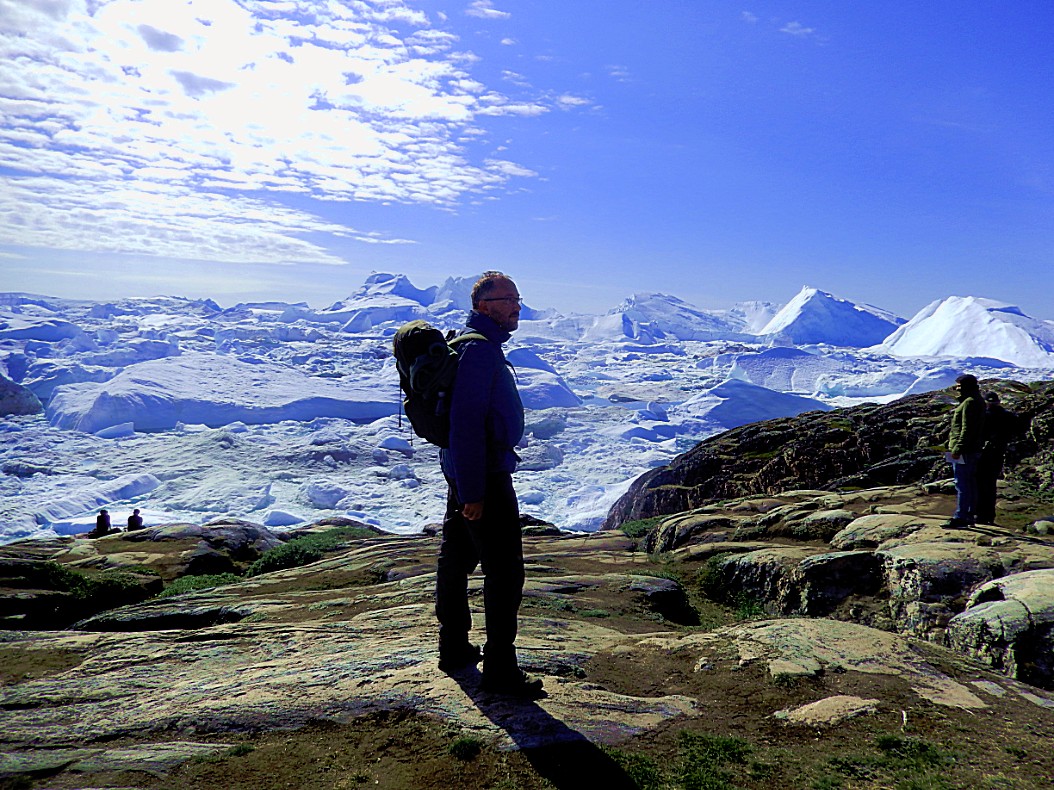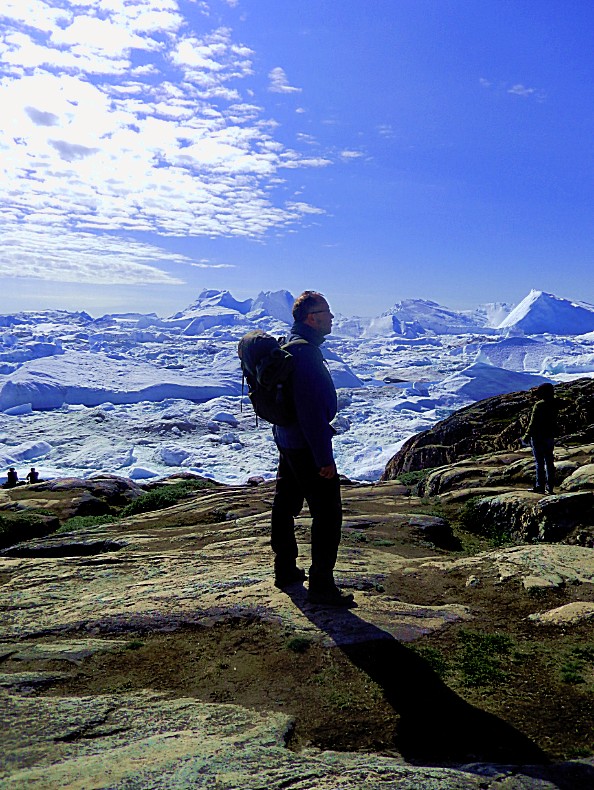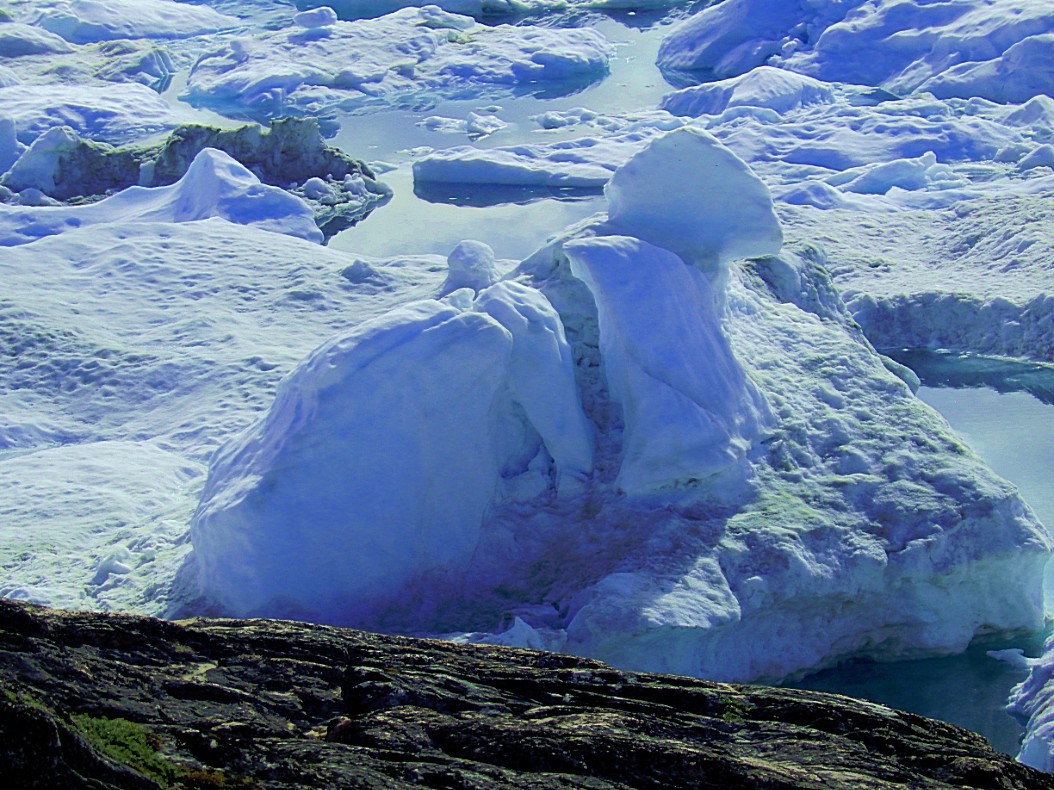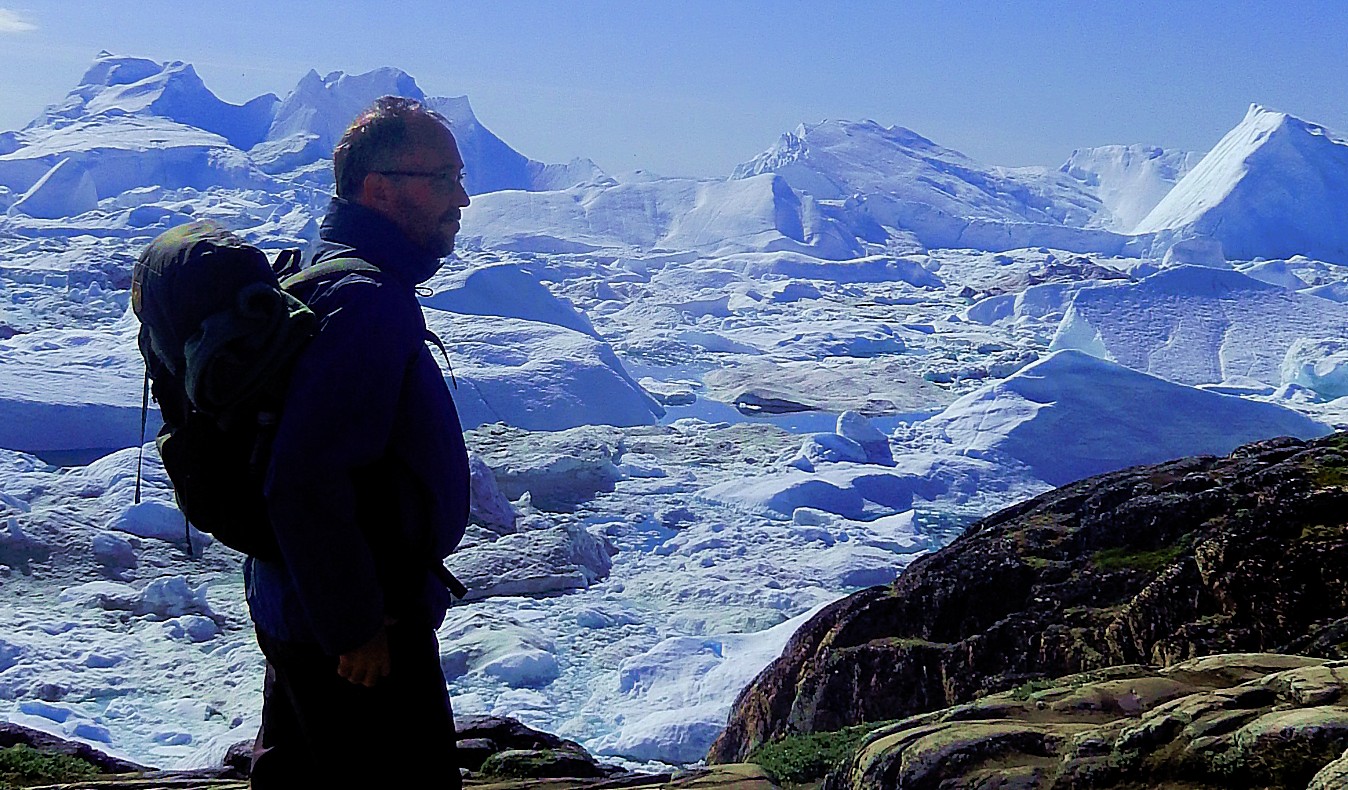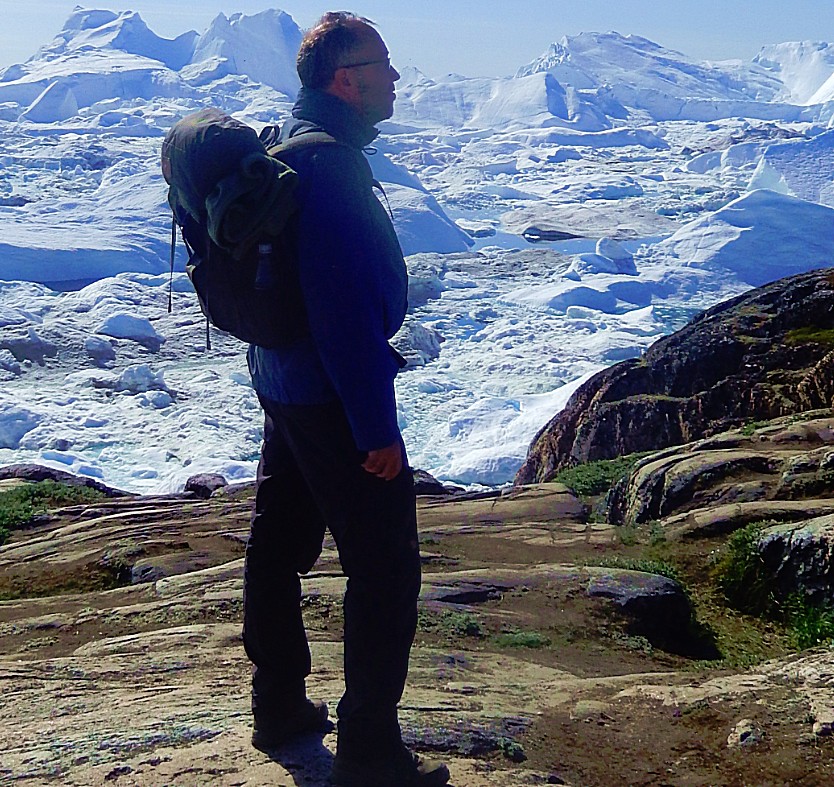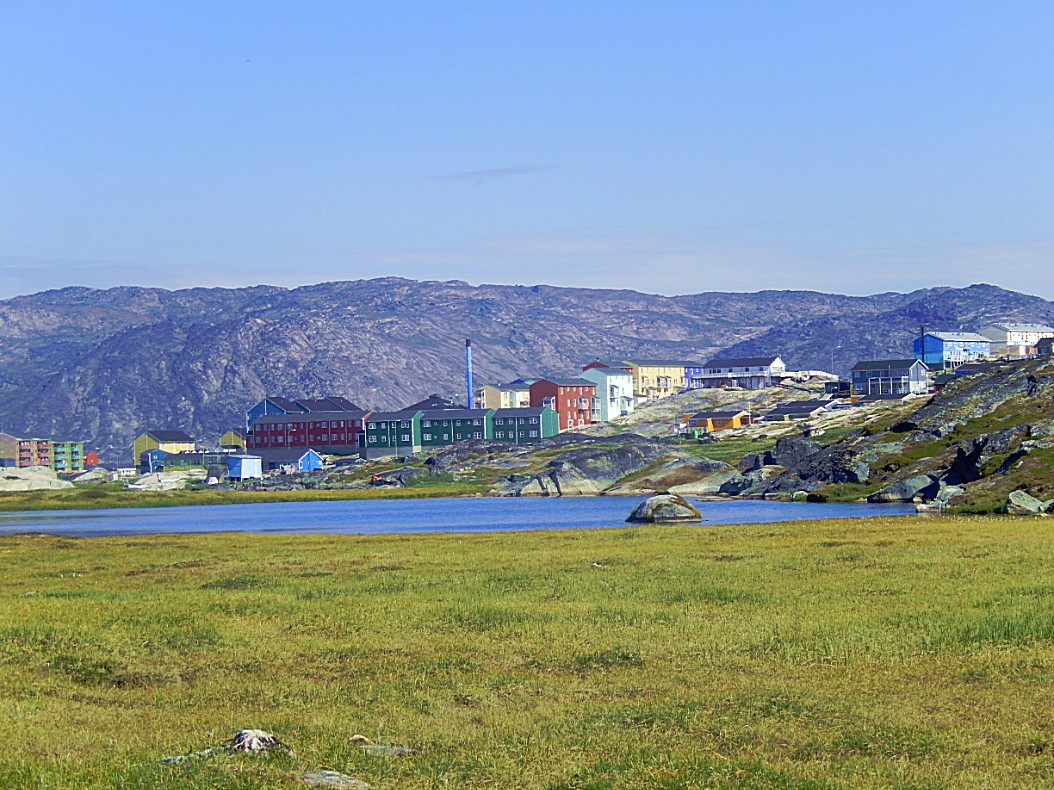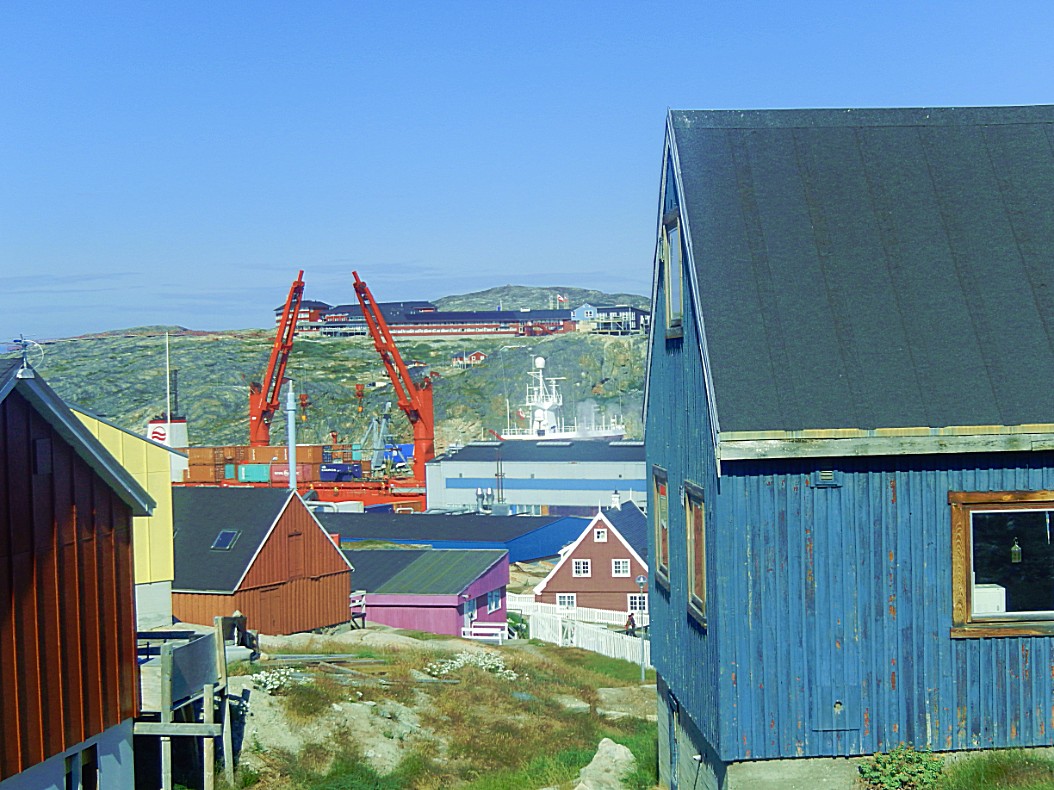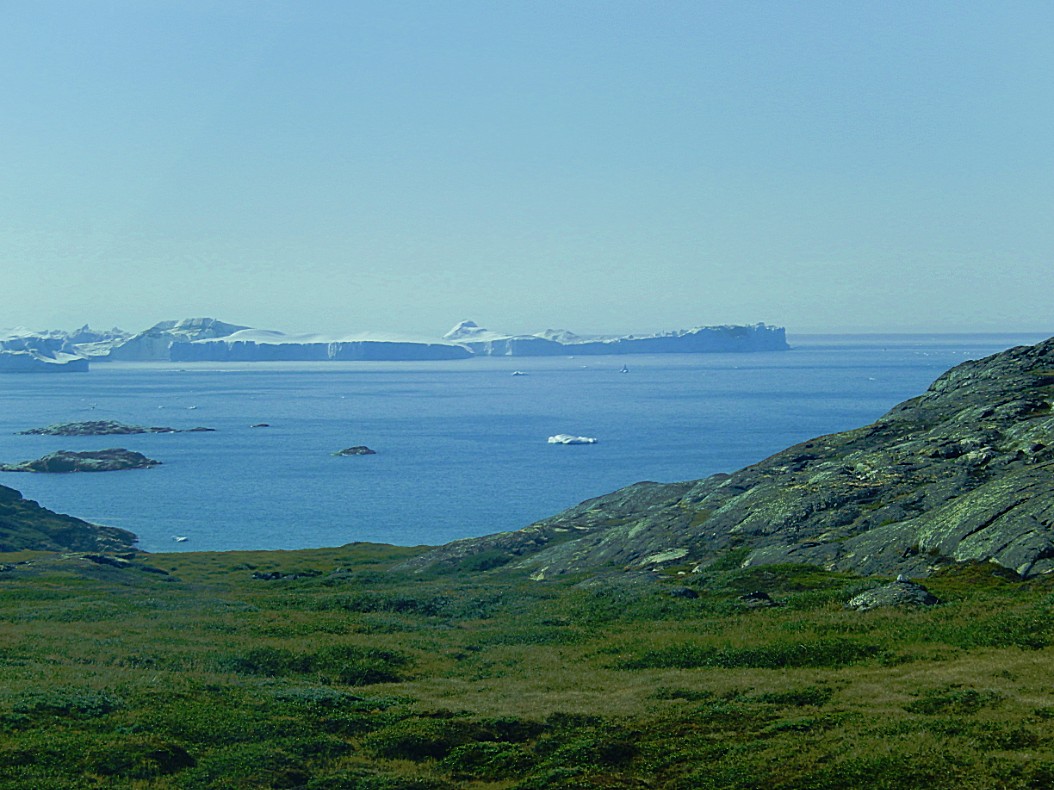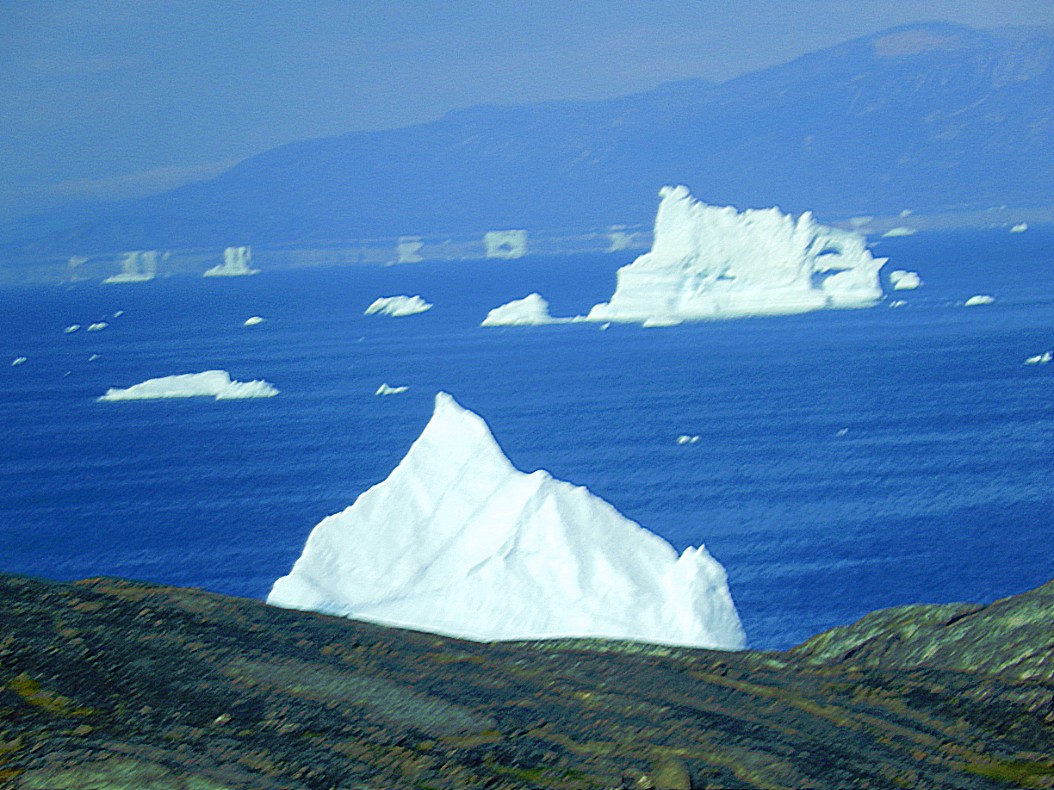10. Greenland: Journey back in time to Sermermiut…- 2017
Today started and ended as a sunny day full of blue skies. After another great breakfast at Hotel Arctic, which had become a real home to me in these days above the arctic circle, The Wandelgek went on a guided tour walk towards the Kangia/Ilulissat/Jakobshavn fjord and towards the ancient Inuit village of Sermermiut.
Beautiful icebergs are the setting for the old settlement Sermermiut, located one and a half kilometers south of Ilulissat. For 4000 years, different Inuit cultures lived in the settlement and today I saw many remains that indicate their presence.
A trip to Sermermiut is an absolute must when visiting Ilulissat, the guide told stories about Inuit people’s life and traditions before the Europeans came to Greenland. There were turf hut ruins to see and it was possible to touch the permafrost with my own hands.
An area so special that UNESCO named it World Heritage in 2004. It is estimated that up to 30,000 guests visit Sermermiut every year, for this reason there is a wooden walkway to protect the area against wear. Therefore anyone can go on this trip.
I followed the walkway to the viewpoint at Nakkaavik – “the place to fall” (Old Ladies Gorge) and the guide served tea or coffee while I could enjoy the view.
Sermermiut
Sermermiut was an Inuit settlement in the Disko Bay, Greenland. The location is now part of the Ilulissat Icefjord World Heritage Site.
History
The pre-colonial history of Sermermiut was pieced together by a series of archaeological excavations during the twentieth century. The area became an area of archaeological interest at the start of the century, although the results were not well documented. A 1953 dig identified that Sermermiut had been used by Saqqaq, Early Dorset and Thule cultures. Another dig in 1983 dated the start of the Early Dorset settlement at around 600–200 BCE.
Saqqaq
The Saqqaq culture (named after the Saqqaq settlement, the site of many archaeological finds) was a Paleo-Eskimo culture in southern Greenland. Up to this day, no other people seem to have lived in Greenland continually for as long as the Saqqaq.
Timeframe
The earliest known archaeological culture in southern Greenland, the Saqqaq existed from around 2500 BCE until about 800 BCE. This culture coexisted with the Independence I culture of northern Greenland, which developed around 2400 BCE and lasted until about 1300 BCE. After the Saqqaq culture disappeared, the Independence II culture of northern Greenland and the Early Dorset culture of West Greenland emerged. There is some debate about the timeframe of the transition from Saqqaq culture to Early Dorset in western Greenland.
The Saqqaq culture came in two phases, the main difference of the two being that the newer phase adapted the use of sandstone. The younger phase of the Saqqaq culture coincides with the oldest phase of the Dorset culture.
Archaeological findings
Frozen remains of a Saqqaq dubbed “Inuk” were found in western Greenland (Qeqertarsuaq) and have been DNA sequenced. He had brown eyes, black hair, and shovel-shaped teeth. It has been determined that he lived about 4000 years ago, and was related to native populations in northeastern Siberia. The Saqqaq people are not the ancestors of contemporary Kalaallit people, but instead are related to modern Chukchi and Koryak peoples. It is not known whether they crossed in boats or over ice.
Saqqaq people lived in small tents and hunted seals, seabirds, and other marine animals. The people of the Saqqaq culture used silicified slate, agate, quartzite, and rock crystals as materials for their tools.
Saqqaq Winter house
Finished house
Early Dorset
The Dorset was a Paleo-Eskimo culture, lasting from 500 BC to between 1000 and 1500 AD, that followed the Pre-Dorset and preceded the Inuit in the Arctic of North America. It is named after Cape Dorset in Nunavut, Canada where the first evidence of its existence was found. The culture has been defined as having four phases due to the distinct differences in the technologies relating to hunting and tool making. Artifacts include distinctive triangular end-blades, soapstone lamps, and burins.
The Dorset were first identified as a separate culture in 1925. The Dorset appear to have been extinct by 1500 at the latest and perhaps as early as 1000. The Thule people, who began migrating east from Alaska in the 11th century, ended up spreading through the lands previously inhabited by the Dorset. There is no strong evidence that the Inuit and Dorset ever met. Modern genetic studies show the Dorset population were distinct from later groups and that “[t]here was virtually no evidence of genetic or cultural interaction between the Dorset and the Thule peoples.”
Inuit legends recount them encountering people they called the Tuniit (singular Tuniq) or Sivullirmiut “First Inhabitants”. According to legend, the First Inhabitants were giants, taller and stronger than the Inuit but afraid to interact and “easily put to flight.” There is also a theory of contact and trade between the Dorset and the Norse.
Early Dorset Winter house
Finished house
Discovery
In 1925 anthropologist Diamond Jenness received some odd artifacts from Cape Dorset. As they were quite different from those of the Inuit, he speculated that they were indicative of an ancient, preceding culture. Jenness named the culture “Dorset” after the location of the find. These artifacts showed a consistent and distinct cultural pattern that included sophisticated art distinct from that of the Inuit. For example, the carvings featured uniquely large hairstyles for women, and figures of both sexes wearing hoodless parkas with large, tall collars. Much research since then has revealed many details of the Dorset people and their culture.
History
Origins
The origins of the Dorset people are not well understood. They may have developed from the previous cultures of Pre-Dorset, Saqqaq or (less likely) Independence I. There are, however, problems with this theory: these earlier cultures had bow and arrow technology which the Dorsets lacked. Possibly due to a shift from terrestrial to aquatic hunting, the bow and arrow became lost to the Dorset. Another piece of technology that is missing from the Dorset are drills: there are no drill holes in Dorset artifacts. Instead, the Dorset gouged lenticular holes. For example, bone needles are common in Dorset sites, but they have long and narrow holes that have been painstakingly carved or gouged. Both the Pre-Dorset and Thule (Inuit) had drills.
Historical and cultural periods
Dorset culture and history is divided into four periods: the Early (500-1 BC), Middle (AD 1-500), and Late phases (AD 500-1000), as well perhaps as a Terminal phase (from c. AD 1000). The Terminal phase, if it existed, would likely be closely related to the onset of the Medieval Warm Period, which started to warm the Arctic considerably around AD 950. With the warmer climates, the sea ice became less predictable and was isolated from the High Arctic.
The Dorset were highly adapted to living in a very cold climate, and much of their food is thought to have been from hunting sea mammals that breathe through holes in the ice. The massive decline in sea-ice which the Medieval Warm Period produced would have strongly affected the Dorset. They could have followed the ice north. Most of the evidence suggests that they disappeared some time between AD 1000 and 1500. Scientists have suggested that they disappeared because they were unable to adapt to climate change or that they were vulnerable to newly introduced disease.
Technology
The Dorset adaptation was different from that of the whaling-based Thule Inuit. Unlike the Inuit, they rarely hunted land animals, such as polar bears and caribou. They did not use bows or arrows. Instead, they seem to have relied on seals and other sea mammals that they apparently hunted from holes in the ice. Their clothing must have been adapted to the extreme conditions.
Triangular end-blades, soapstone, and burins are diagnostic of the Dorset. The end-blades were hafted onto harpoon heads. They primarily used the harpoons to hunt seal, but also hunted larger sea mammals such as walrus and narwhals. They made kudlik lamps from soapstone and filled them with seal oil. Burins were a type of stone flake with a chisel-like edge. They were probably either used for engraving or for carving wood or bone. The burins were also used by Pre-Dorset groups and had distinctive mitten shape.
The Dorset were highly skilled at making refined miniature carvings, and striking masks. Both indicate an active shamanistic tradition. The Dorset culture was remarkably homogeneous across the Canadian Arctic, but there were some important variations which have been noted in both Greenland and Newfoundland/Labrador regions.
Interaction with the Inuit
There appears to be no genetic connection between the Dorset and the Thule who replaced them. Archaeological and legendary evidence is often thought to support some cultural contact, but this has been questioned. The Thule, for instance, engaged in seal-hole hunting, a method which requires several steps and includes the use of dogs. The Thule apparently did not use this technique in the time they had previously spent in Alaska. Settlement pattern data has been used to claim that the Dorset also extensively used a breathing-hole sealing technique and perhaps they would have taught this to the Inuit. But this has been questioned on the grounds that there is no evidence that the Dorset had dogs.
Some elders describe peace with an ancient group of people, while others describe conflict.
The Sadlermiut
The Sadlermiut were a people living in near isolation mainly on and around Coats Island, Walrus Island, and Southampton Island in Hudson Bay up until 1902–03. Encounters with Europeans and exposure to infectious disease caused the deaths of the last members of the Sadlermiut.
Scholars had believed the Sadlermiut were the last remnants of the Dorset culture, as they had a culture and dialect distinct from the mainland Inuit. Supporting this a 2002 mitochondrial DNA research showed that the Sadlermiut bore a mitochrondrial relationship to both the Dorset and Thule peoples, perhaps suggesting local admixture.
However a subsequent 2012 genetic analysis showed no genetic link between the Sadlermiut and the Dorset.
Thule
The Thule or proto-Inuitwere the ancestors of all modern Inuit. They developed in coastal Alaska by 1000 and expanded eastwards across Canada, reaching Greenland by the 13th century. In the process, they replaced people of the earlier Dorset culture that had previously inhabited the region. The appellation “Thule” originates from the location of Thule (relocated and renamed Qaanaaq in 1953) in northwest Greenland, facing Canada, where the archaeological remains of the people were first found at Comer’s Midden. The links between the Thule and the Inuit are biological, cultural, and linguistic.
Evidence supports the idea that the Thule (and also the Dorset, but to a lesser degree) were in contact with the Vikings, who had reached the shores of Canada in the 11th century. In Viking sources, these peoples are called the Skræling. Some Thule migrated southward, in the “Second Expansion” or “Second Phase”. By the 13th or 14th century, the Thule had occupied an area currently inhabited by the Central Inuit, and by the 15th century, the Thule replaced the Dorset. Intensified contacts with Europeans began in the 18th century. Compounded by the already disruptive effects of the “Little Ice Age” (1650–1850), the Thule communities broke apart, and the people were henceforward known as the Eskimo, and later, Inuit.
Thule Winter house
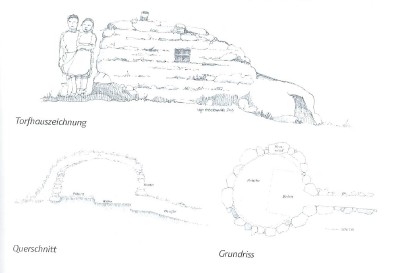 Some drawings showing us how the houses in the Thule culture timespan were build:
Some drawings showing us how the houses in the Thule culture timespan were build:
Finished house
Sermermiut was abandoned in 1850 when the last resident moved to nearby Jakobshavn (now renamed Ilulissat).
This is what the village in general looks like…
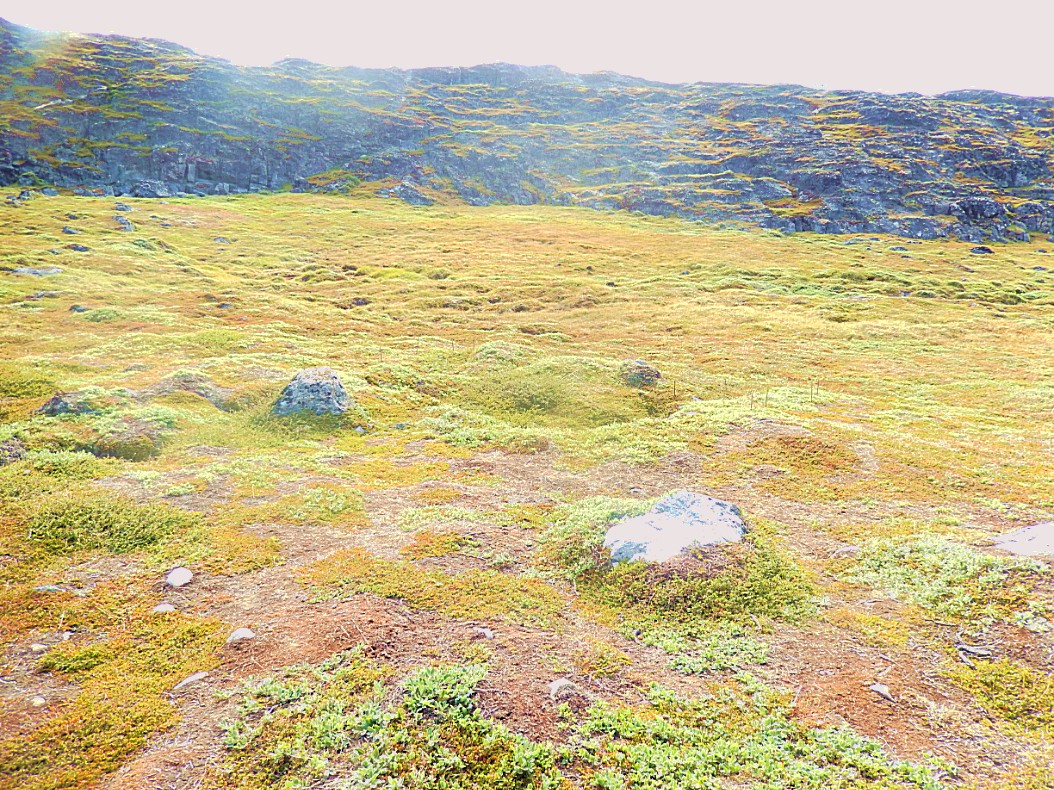
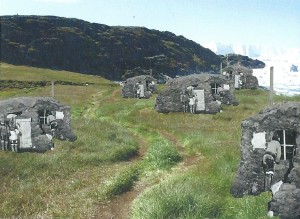 And this is how it would have looked while populated by its last inhibitants:
And this is how it would have looked while populated by its last inhibitants:
There were many holes and fissures in the mossy surface and I could stick a hand and an arm deep into the surface and actually feel the cold frozen permafrost layer below. The underground never melts, well… except of course when climate change does. In this frozen underground are lots of plant remains, which start rotting if they unfreeze and they release gas which will heat up the earth even more and even faster… Another reason to not let this happen.
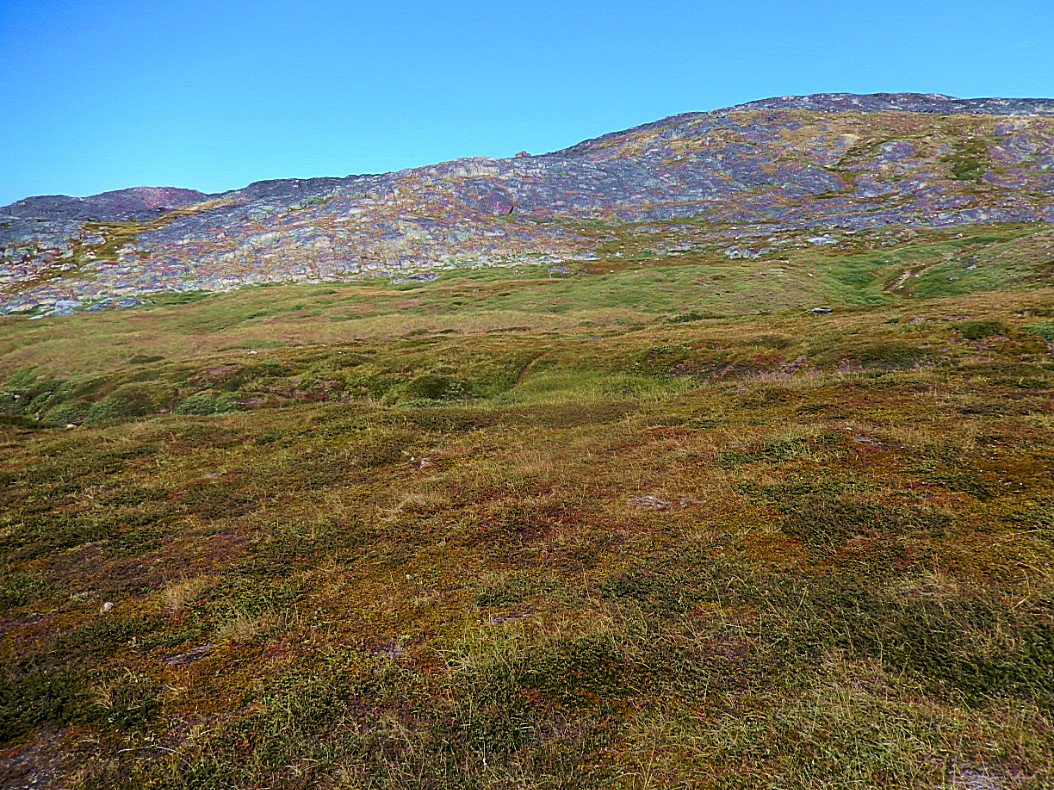 …not much to see, except for the keen eagle eye scout, who can spot some small sticks surrounding a grassy hill. This grassy hill was actually a Sermermiut hut, a home to tribe members living here at the verge of the fjord.
…not much to see, except for the keen eagle eye scout, who can spot some small sticks surrounding a grassy hill. This grassy hill was actually a Sermermiut hut, a home to tribe members living here at the verge of the fjord.
This map from the museum in Ilulissat shows where houses in the settlement of Sermermiut were discovered and what type of houses:
These houses found, were the Thule period houses as shown earlier. There are about 40 Turf house ruins in Sermermiut, but you can hardly see them. Most of these ruins originate from the Thule culture, where the current Greenlandic Inuit population is descending from. The Turf houses made of stone and turf had a roof construction made out of driftwood and whale bones. The entrance was dug deeper than the actual house, to prevent the warmth created by the whale-oil lamp getting lost.
The oldest houses from the Thule culture were small and round. In the timespan between 1700 and 1800 after Chr., multiple families lived in large houses, but around 1900 again only one familie lived in a house, but these later houses were square and trapezium shaped. Purely seen from an economic point of view, the turf houses were good, because they didn’t require any real investment, and it was possible to keep following the animals of prey. People stayed mobile.
We ended our visit to Sermermiut at he coast of the Kangia icefjord, the reason why the village of Sermermiut was located her in the first place.
Why settle at Sermermiut?
The Kangia/Ilulissat/Jakobshavn icefjord is enormously rich with fish and other possible prey, because the melting ice brings extremely nutritious water to the surface.
In the Arctic, Inuit people survived thousands of years using natural resources. At the icefjord, the sea is extremely plentiful with animals, because the melting icebergs stir the seawater which brings the deep cold but very nutritious water to the surface. That’s why Sea mammals and fish are present in huge numbers at the mouth of the icefjord. That’s also why this area is the most kozentrated fishing ground in the whole north Atlantic.
There are not many mammals on dry land though, because the strip of land between the coast and the barren inland ice is just about 40 kilometres wide. There are a few arctic foxes, hares or musk oxes and reindeer/karibou to spot, mainly on the south side of the fjord.
During winter, people lived in Sermermiut and in summer people went to the summer hunting areas. The Seal was vital for the survival of people at Sermermiut. The Seal provided everything which was vital for survival: cloths, food, heat, light and (building) materials.
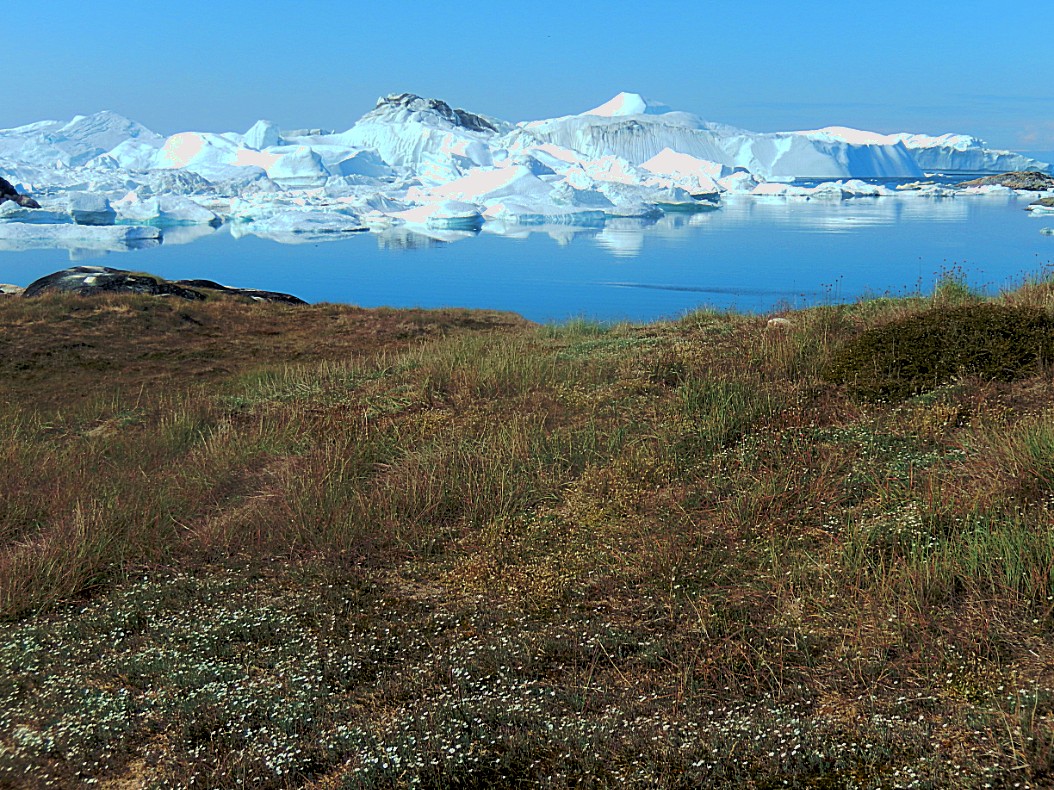
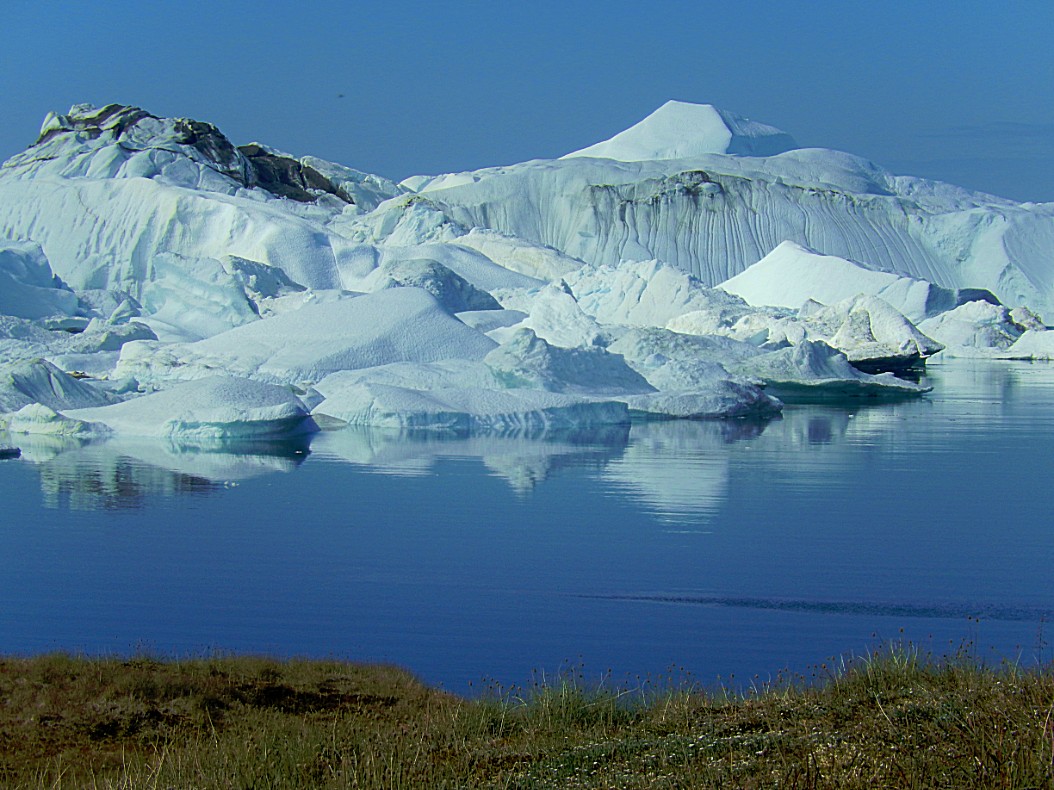 Why abandon Sermermiut?
Why abandon Sermermiut?
About 1850 people left Sermermiut for the last time. The nearby settlement of Jakobshavn (founded in 1741) attracted a lot of its inhabitants. At the same time the climate had changed and for a few hundred years, until 1850, it was extremely cold. This timespan became kniwn as “the small Ice Age”. Because of this, the glacier front had moved extremely fast and deep forward into Disco Bay, which could have led to problems caused by the ice, blocking the entrance to the village.
Gruesome custom at Old Wives Gap
A few years after my visit to Greenland I saw this movie named Midsommar by director Swedish Ari Aster.

In this movie which was heralded as the 1st horror movie filmed in broad daylight. The movie is set in a pastoral northern Swedish village that for 9 days is the setting for a ancient custom driven Midsommar festival. Underneath, the movie is about the unfairness of white male dominance being countered by female empowerment. But lets not discuss the movie here. I mention it because of one of the rituals which is shown on the 1st day of the Midsommar festival, which utterly shocks the outsiders/guests that visit the village.
In this scene two elderly inhabitants of the village are cartied in chairs to the top of a cliff overlooking the village. There they jump…… As I ssid before: This is a horror movie (or better a shock movie), and the visuals are gore.
But it reminded me immediately of this place I visited in Greenland near the village of Sermermiut.
At the very end of the wooden UNESCO trail The Wandelgek arrived at the Old Wives Gap (a chasm in the rocky coast) where old women from Sermermiut went to to throw themselves of the cliffs onto the rocks and ice or into the cold water to die and stop being a burden to the community. Gruesome but the reality of living in such a harsh environment.
The ritual from the movie to us seems gruesome and maybe even fabricated to shock us, but nothing is further from the trueth that wherever there are tribes living on this world that have not yet made a connection or that not yet were influenced by our modern society, there are really gruesome customs and rituals to be found. Gruesome to us, accustomed to a modern society where wild nature and a principle like survival of the fittest are banned.
But in societies that really depend upon nature and the Darwinistic principle of survival of the fittest, these rituals and customs were often necessary for the community to survive.
E.g.: The ritual/custom from the movie where old people don’t wait for a natural death or a death after a long trajectory passed doctors and hospitals. In a community like Sermermiut, this would have put a burden (extra hunting, extra food gathering (berry picking etc, no contribution to the society) on the other villagers that would have been to heavy to bare. Family and other villagers could not or would not help these old people to stay alive. Probably due to the harshness of the landscape and the scarse food supplies. Therefore they end life whenever they feel they have become a burden and are ready to leave. The alternative would be to stay alive and probably starve to death. Survival of the fittest.
Don’t get me wrong: I’m not judging this to be right or wrong. I’m only making connections between the movie and real life that once was. These Greenlandic tribes have evolved into modern Greenlandic Inuit and these customs got lost in time…
Viewpoint
Near the Old Wives Gap was a wooden stair leading to the viewpoint over the icefjord from where the blue trail went on. Every day the weather is different and ice, because of it being reflective, shows itself in different color palettes. Today it was sunny and although there were some thin cloud layers, the sun and mr. Blue Sky showed themselves alot. This made the views over the icefjord very spectacular…
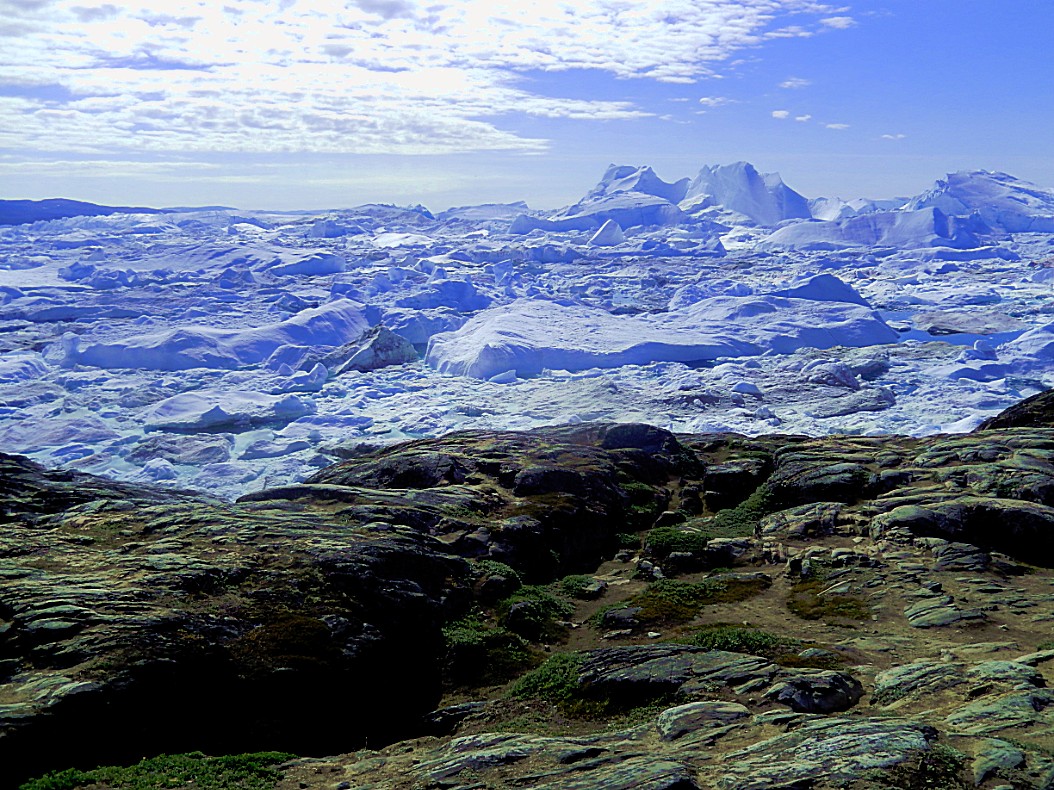
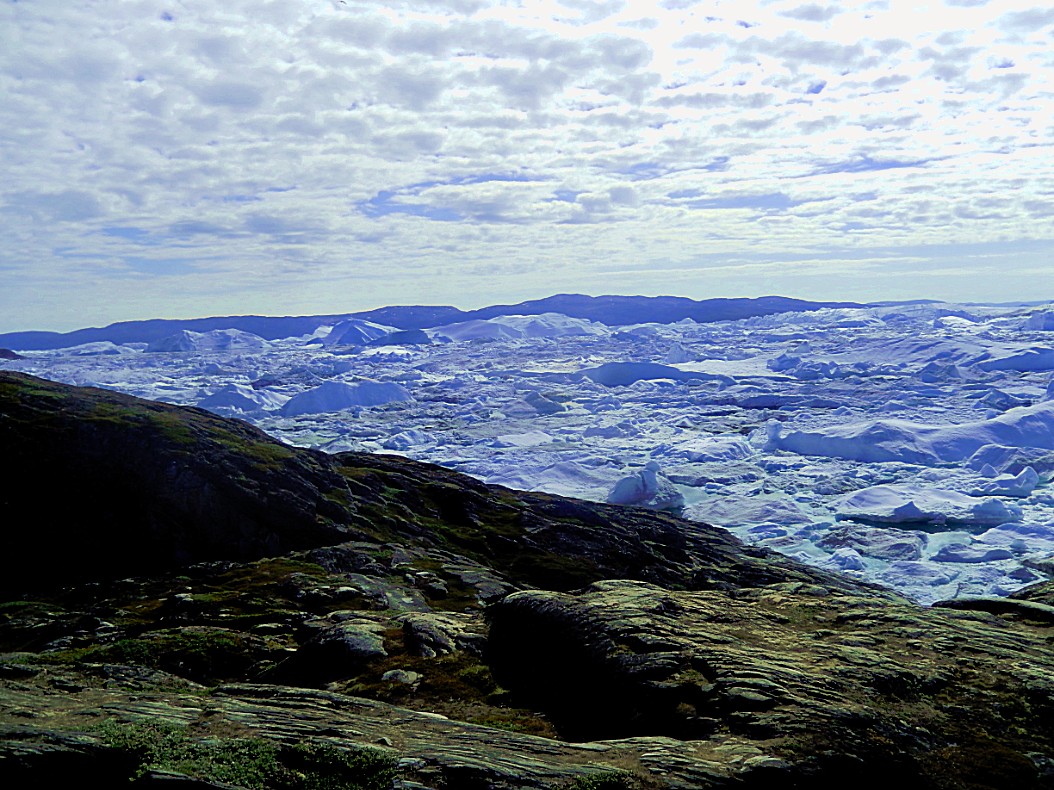 We humans are dwarfed standing in front of such a backdrop…
We humans are dwarfed standing in front of such a backdrop…
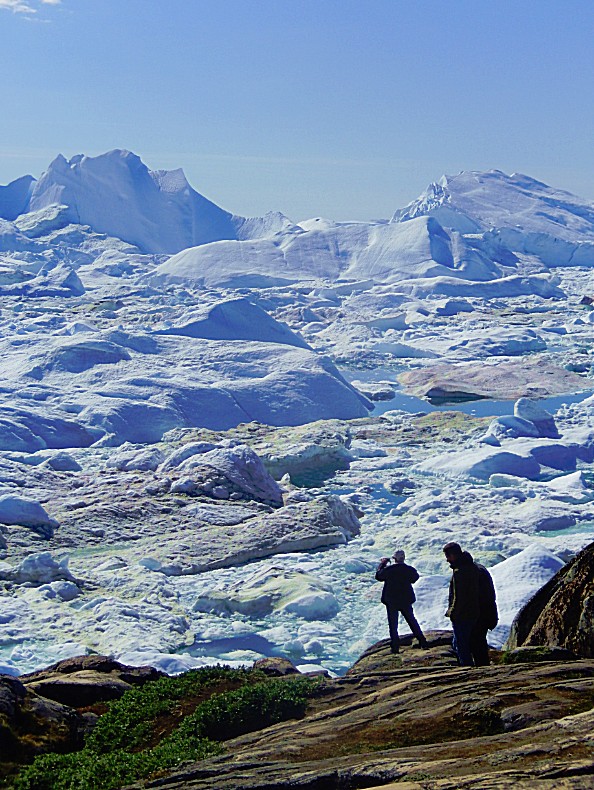
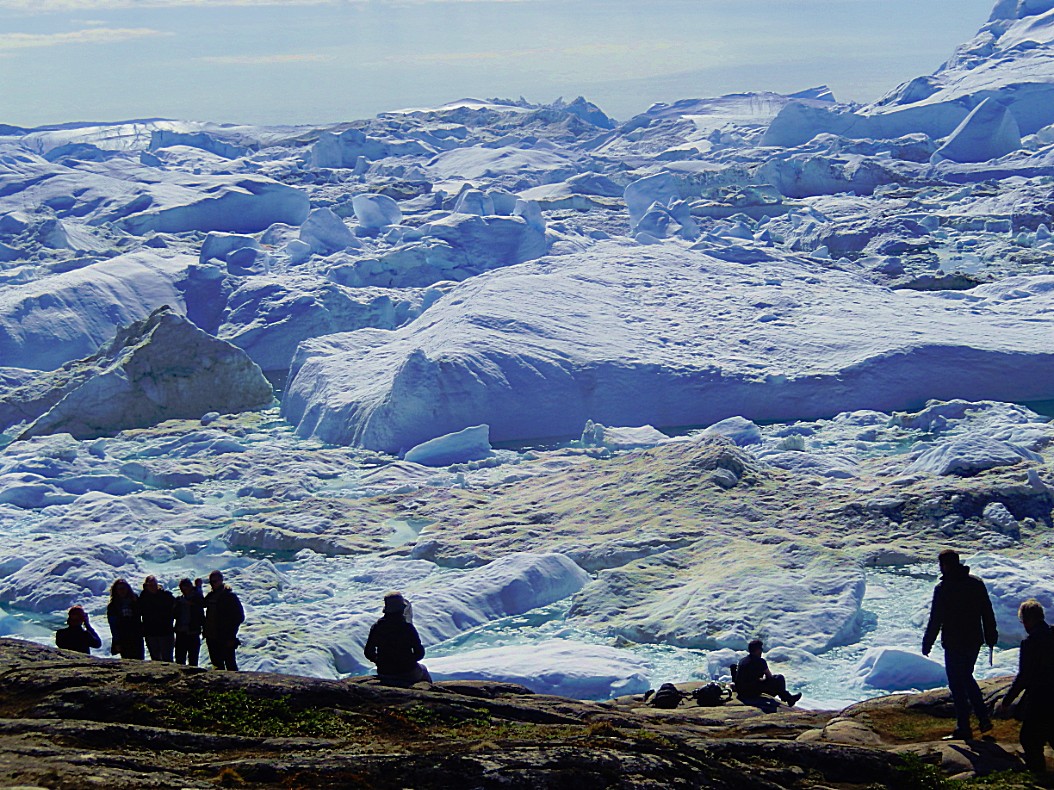
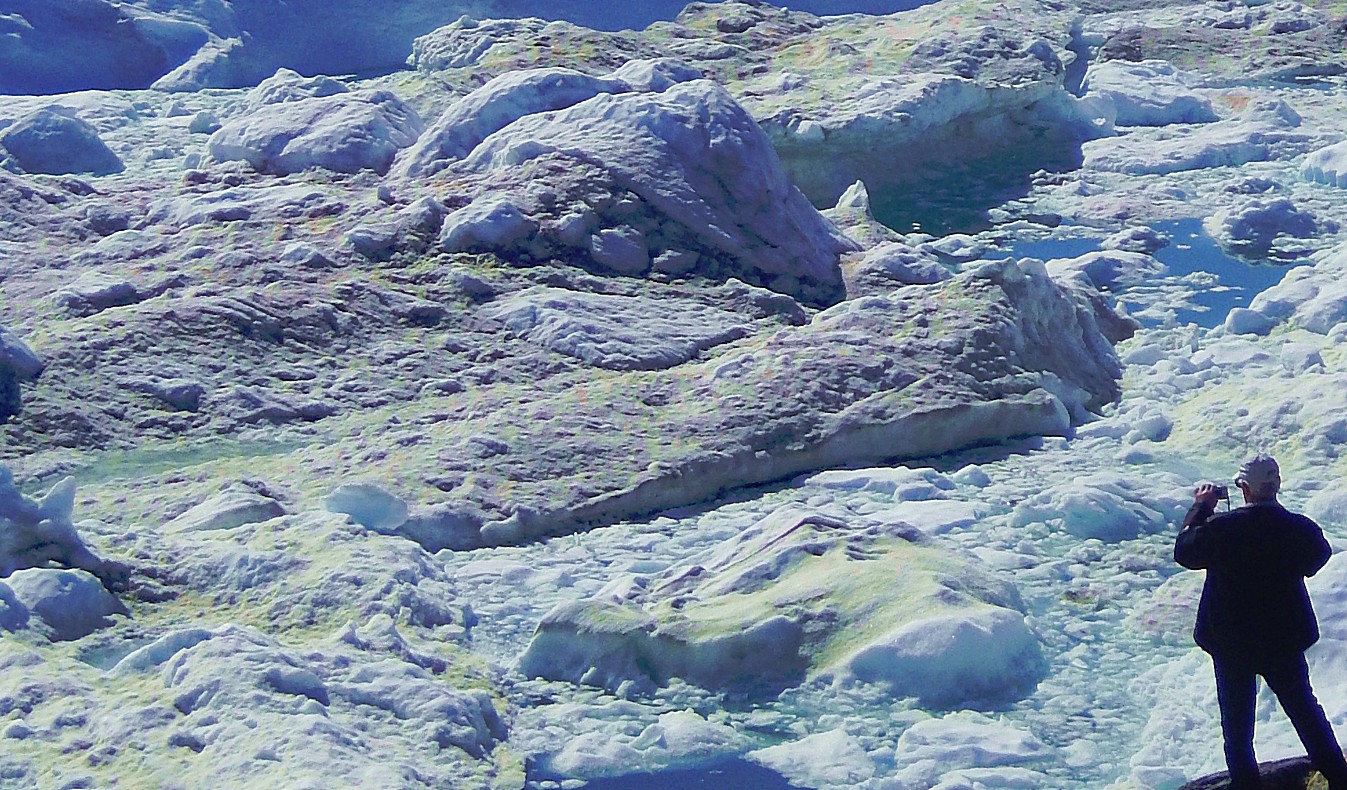
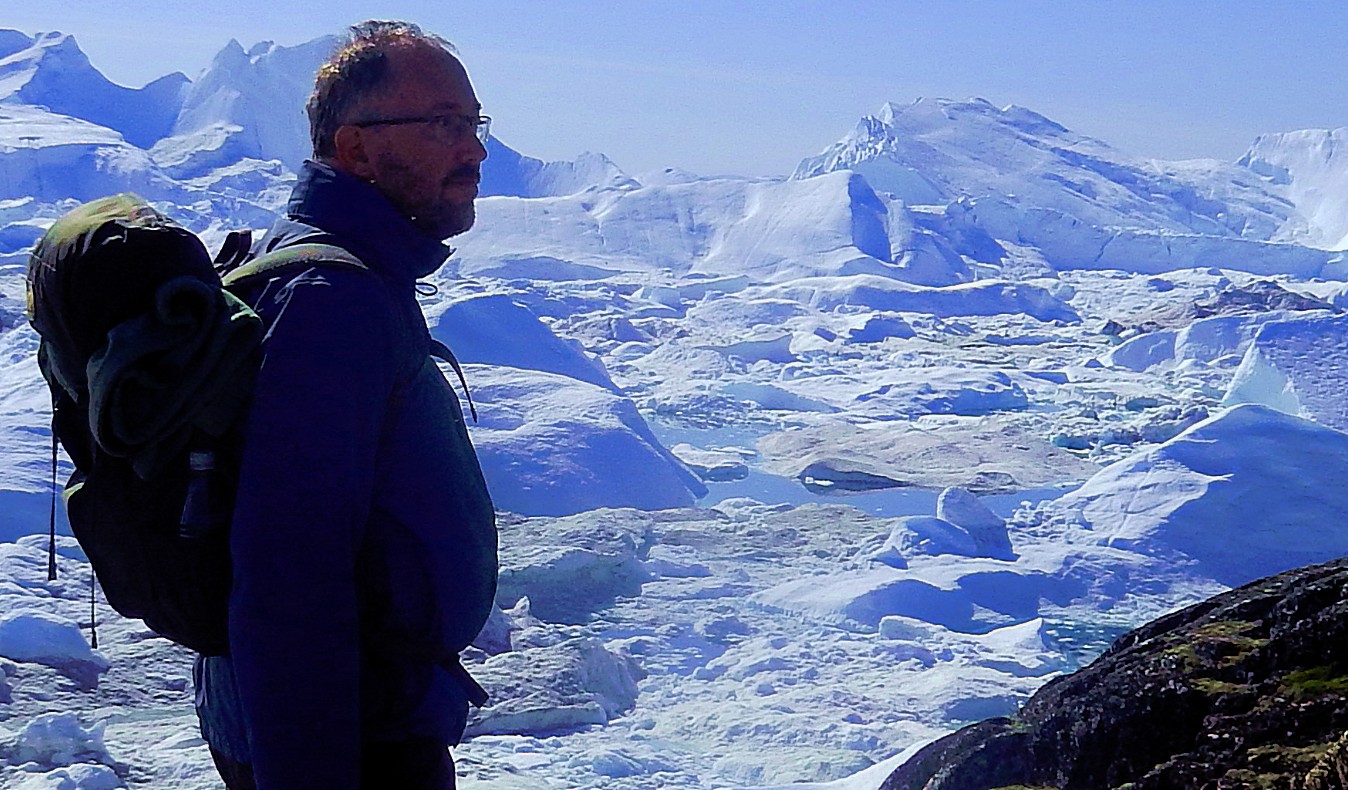

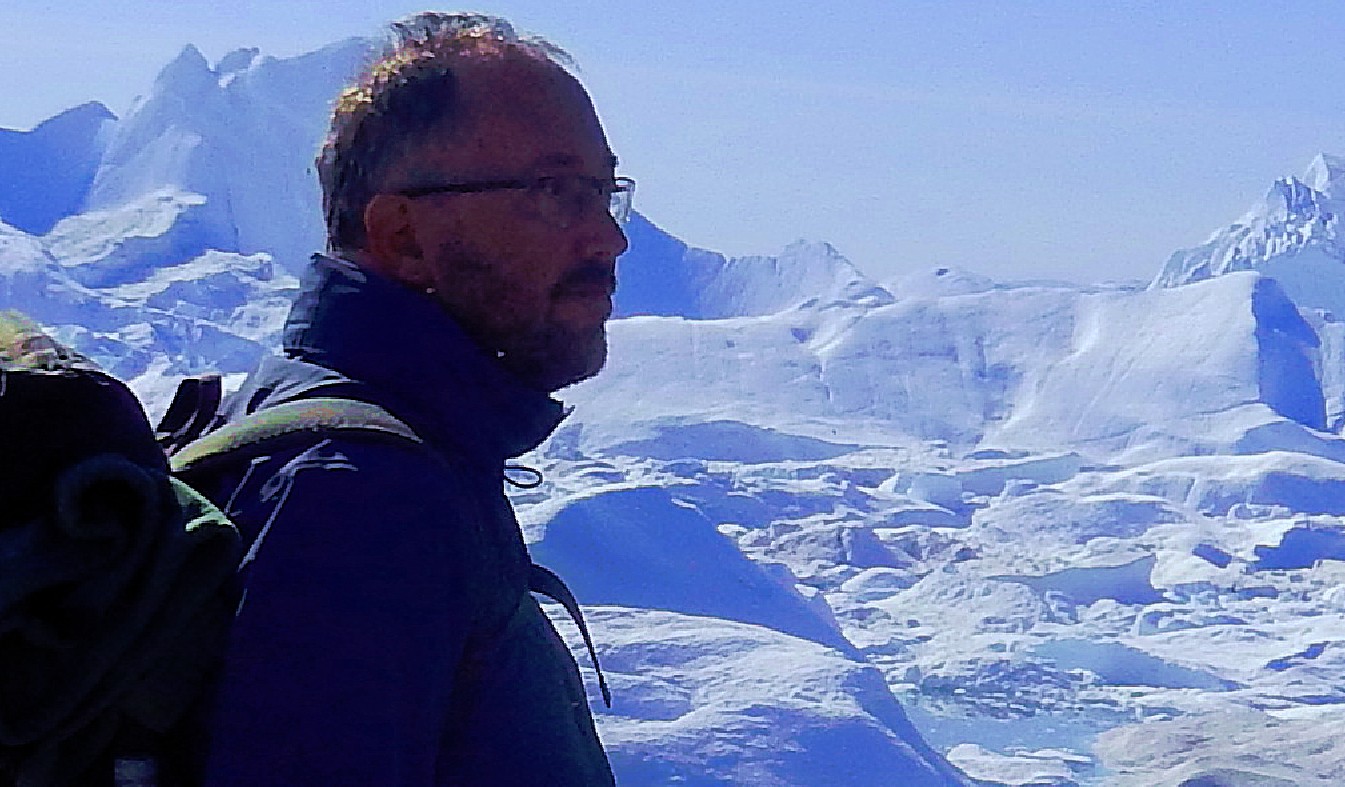 The route back to Ilulissat was identical to the roate towards. The Wandelgek walked through the outskirts of Ilulissat towards the city centre.
The route back to Ilulissat was identical to the roate towards. The Wandelgek walked through the outskirts of Ilulissat towards the city centre.
Large icebergs drifting in Disko Bay…
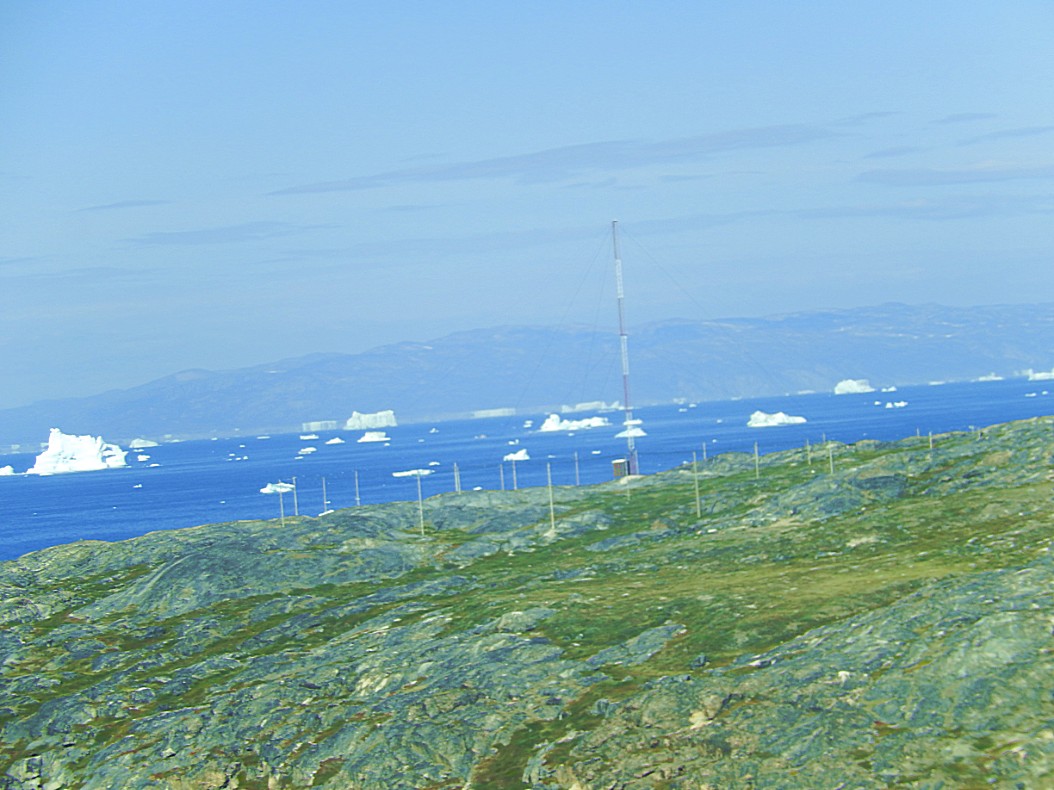 The guided tour ended at the blue office of World of Greenland right on time to take a minibus to the airport.
The guided tour ended at the blue office of World of Greenland right on time to take a minibus to the airport.


